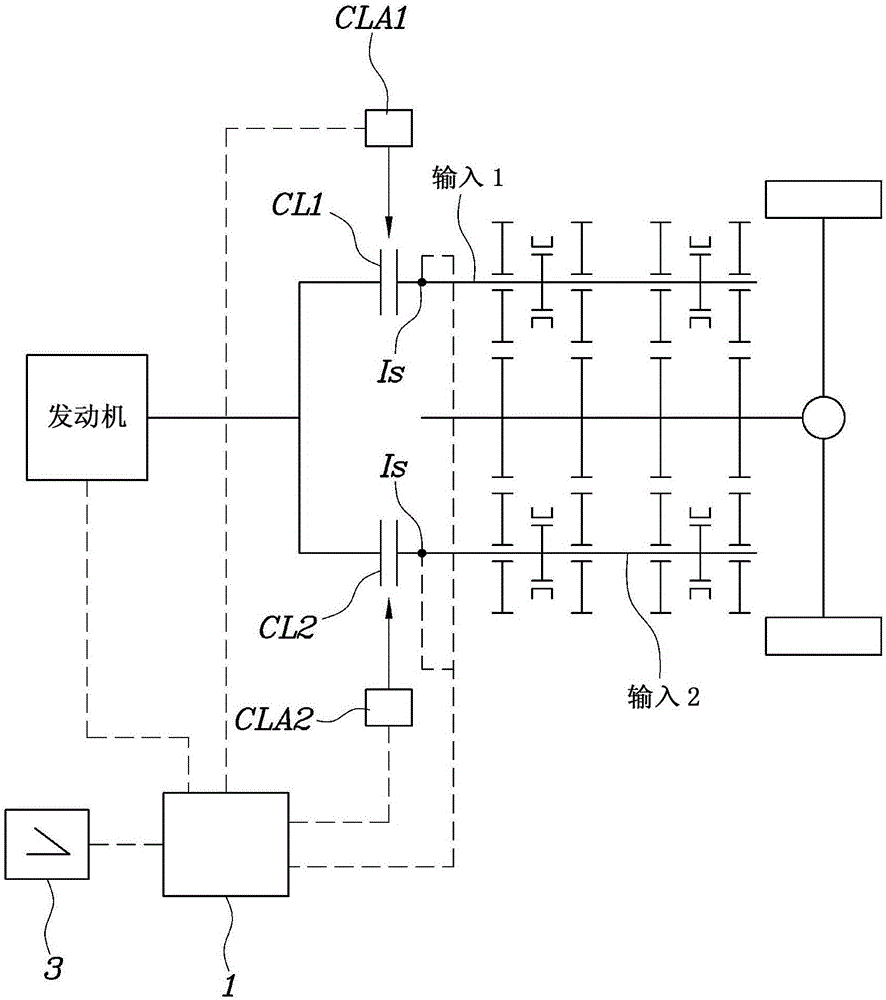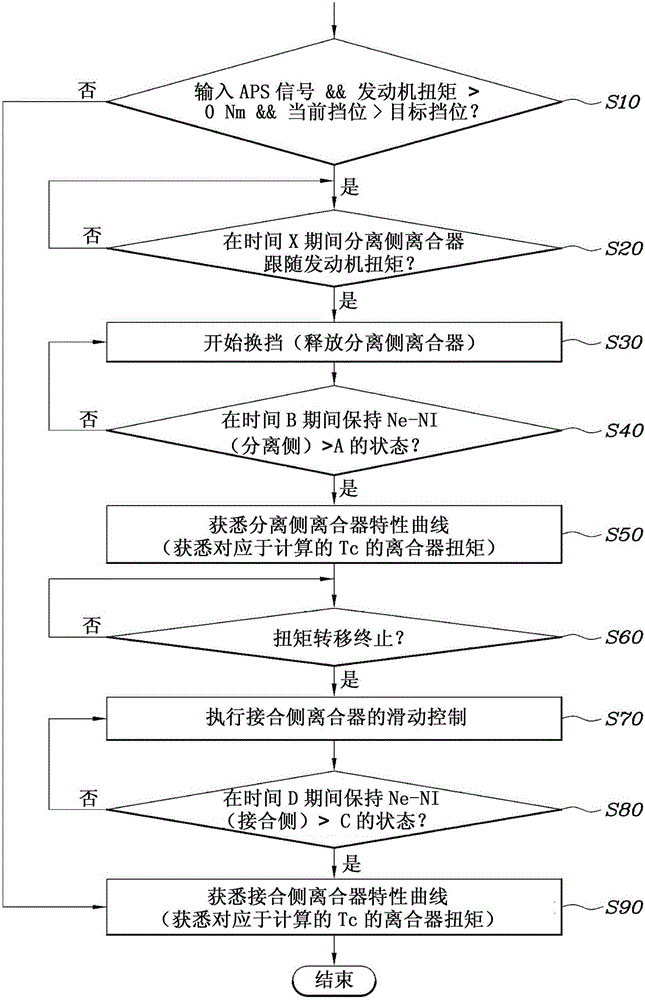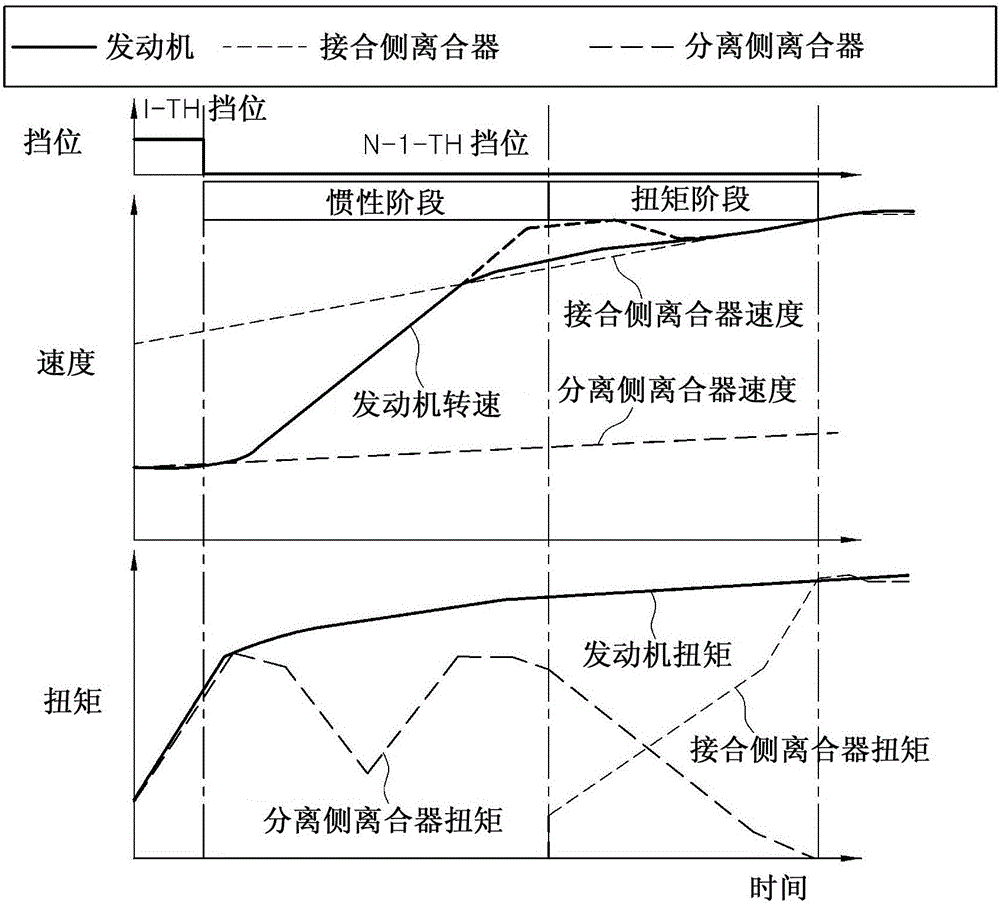Method for learning clutch characteristic in dual clutch transmission vehicle
A clutch and side clutch technology, applied in the field of learning the characteristics of dry clutches, can solve problems such as difficult to estimate torque, and achieve the effect of smooth change
- Summary
- Abstract
- Description
- Claims
- Application Information
AI Technical Summary
Problems solved by technology
Method used
Image
Examples
Embodiment Construction
[0022] Hereinafter, exemplary embodiments of the present disclosure will be described in detail with reference to the accompanying drawings.
[0023] A method for learning clutch characteristics in a DCT vehicle according to the present disclosure may include a shift condition determining step, a synchronizing step, a clutch release determining step, and a disengagement side clutch learning step.
[0024] refer to figure 1 and figure 2 Describing the present disclosure in detail, the controller 1 may receive a value representing the driving state of the vehicle and determine whether the current driving state satisfies the shift condition in the shift condition determining step.
[0025] For example, in the shift condition determination step, an APS signal is input in response to stepping on the accelerator pedal 3, and it may be determined whether or not a power-on downshifting condition is satisfied. Here, the condition for initiating a downshift may refer to a state in wh...
PUM
 Login to View More
Login to View More Abstract
Description
Claims
Application Information
 Login to View More
Login to View More - R&D
- Intellectual Property
- Life Sciences
- Materials
- Tech Scout
- Unparalleled Data Quality
- Higher Quality Content
- 60% Fewer Hallucinations
Browse by: Latest US Patents, China's latest patents, Technical Efficacy Thesaurus, Application Domain, Technology Topic, Popular Technical Reports.
© 2025 PatSnap. All rights reserved.Legal|Privacy policy|Modern Slavery Act Transparency Statement|Sitemap|About US| Contact US: help@patsnap.com



